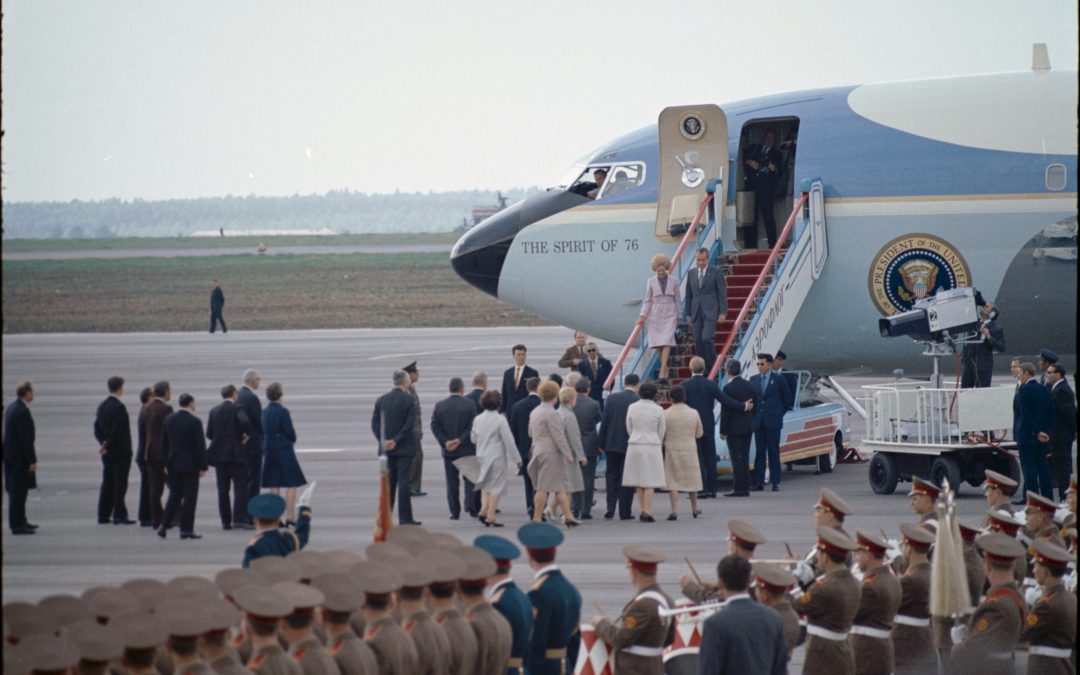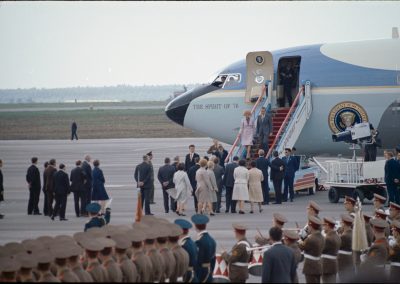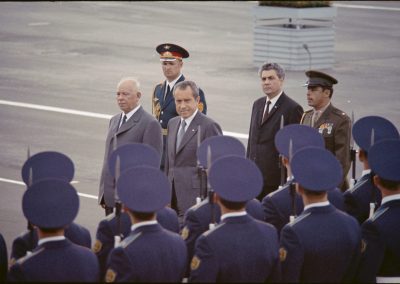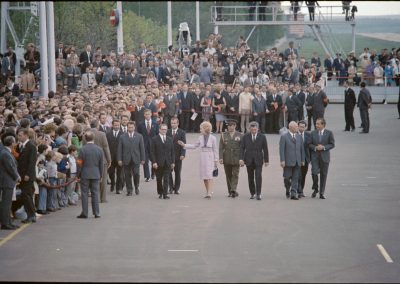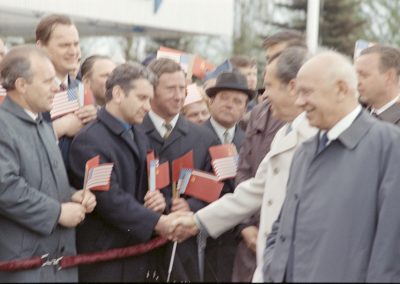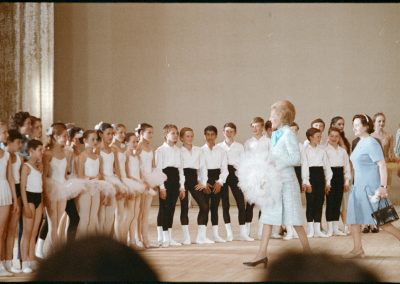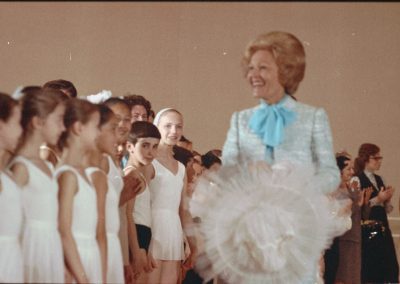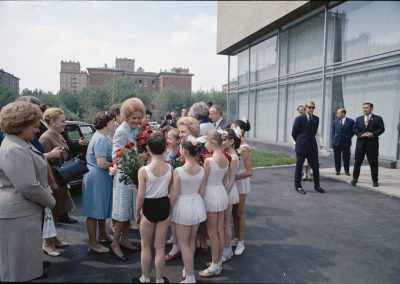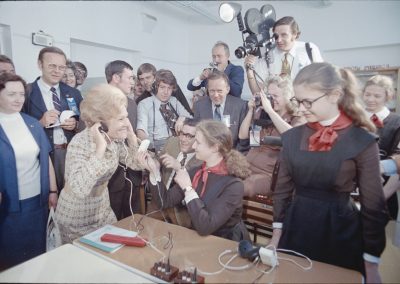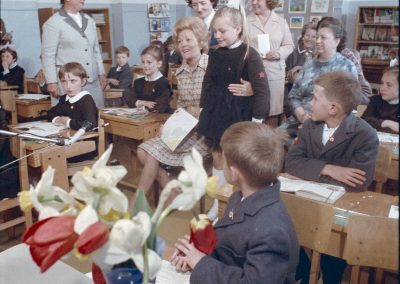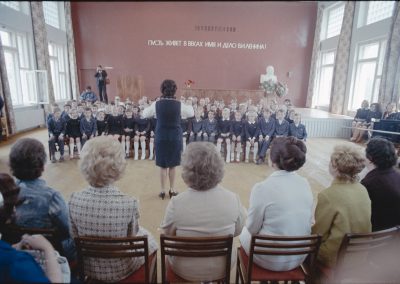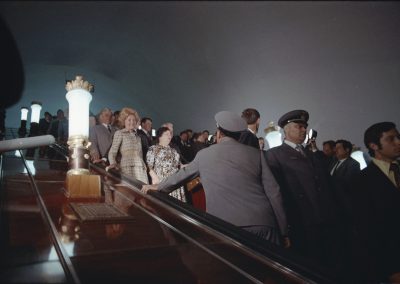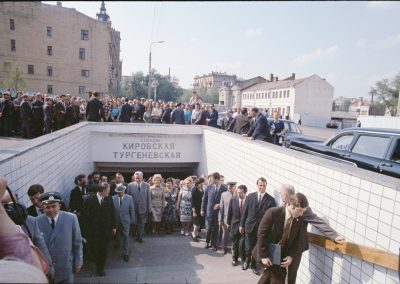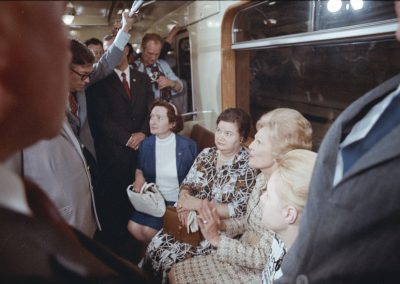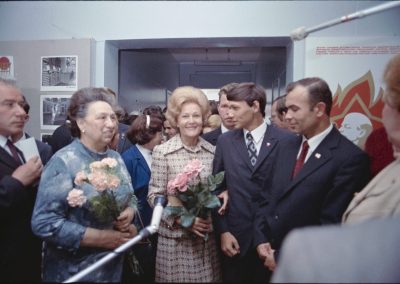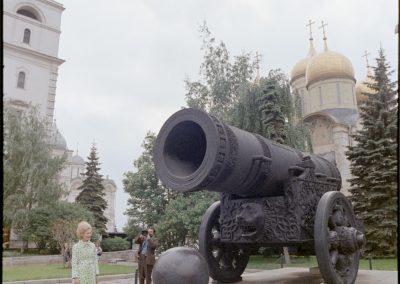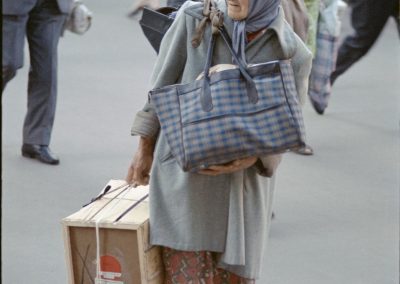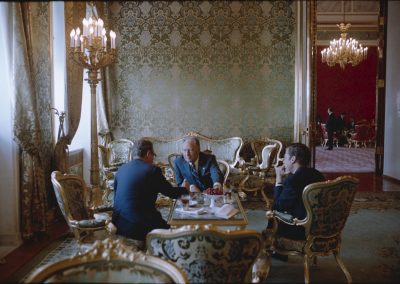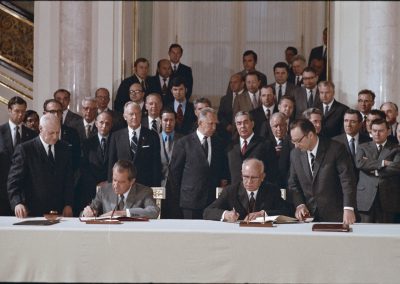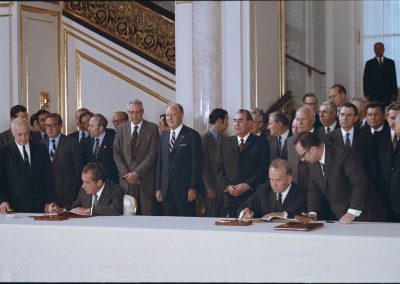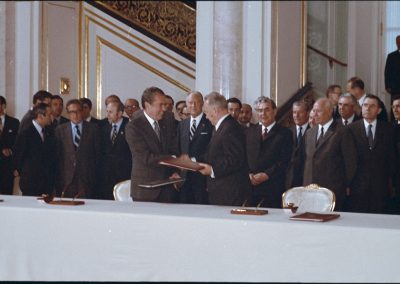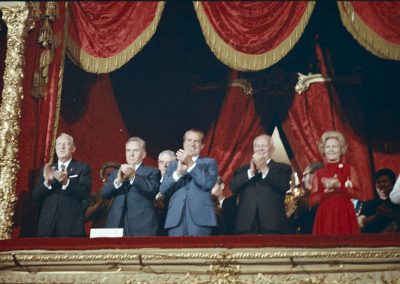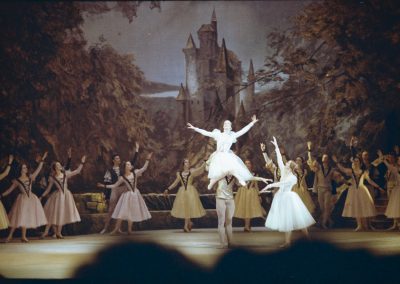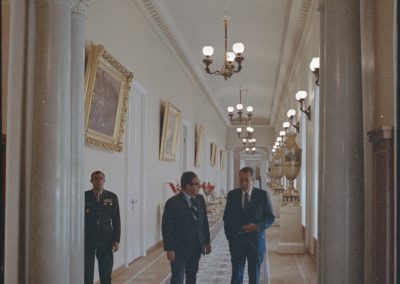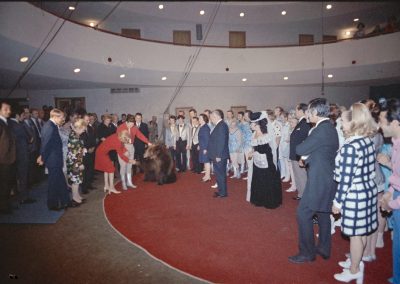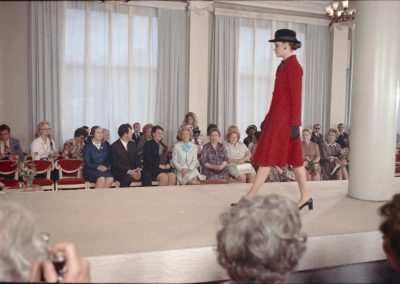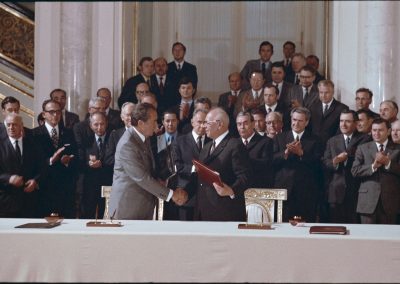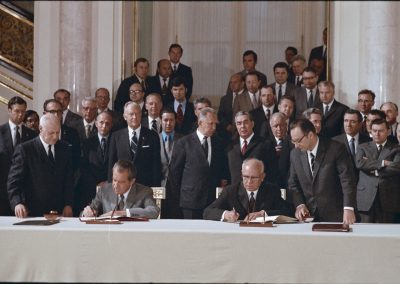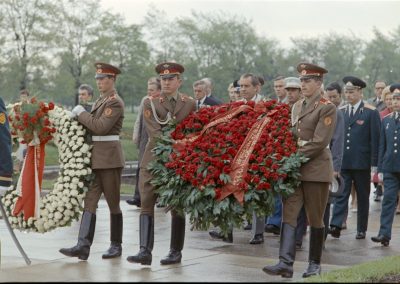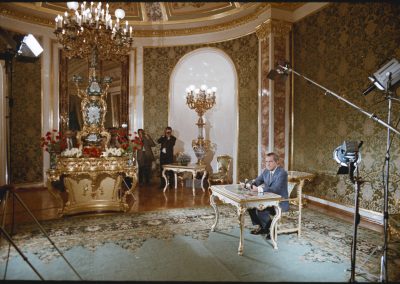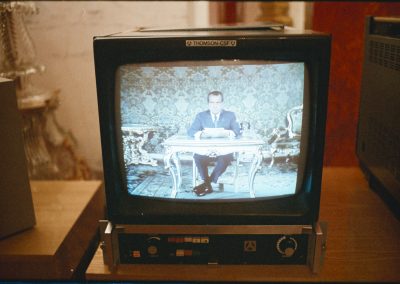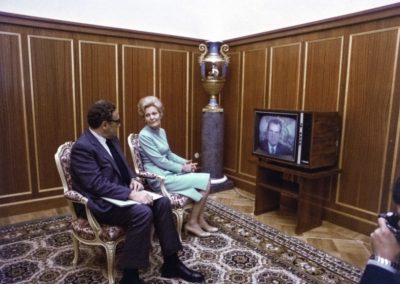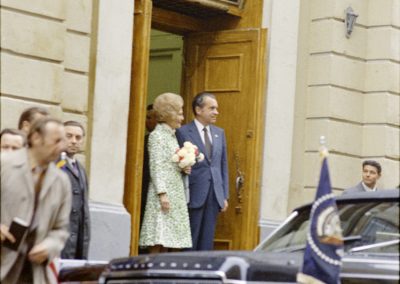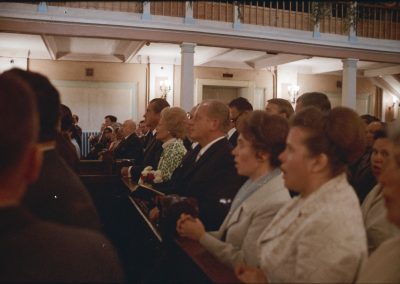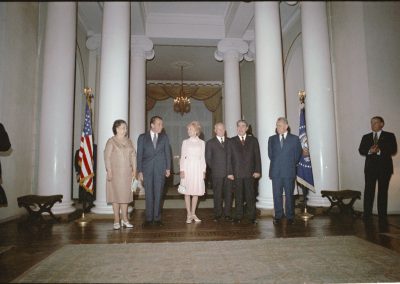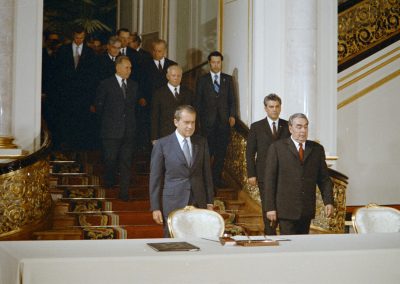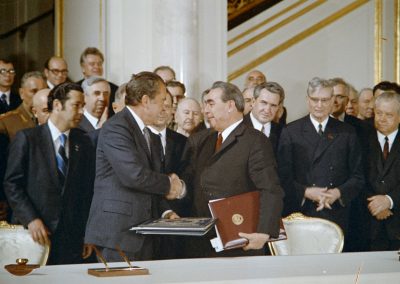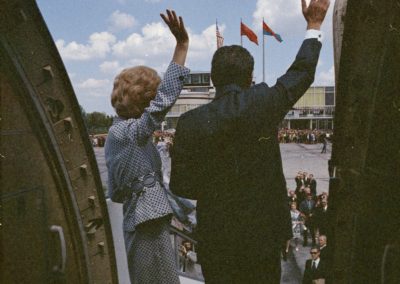On the heels of a historic visit to China in February, President Nixon made another historic first in May 1972 by becoming the first U.S. President to visit Moscow. This was part of Nixon’s grand strategy of foreign policy centered on Triangular Diplomacy—seizing on division within the Communist bloc to achieve better relations with both China and the Soviet Union than they had with each other. The Moscow Summit marked the beginning of détente, easing of tensions, between the two superpowers.
“This has to be one of the great diplomatic coups of all times! Three weeks ago everyone predicted it would be called off, and today we’re on our way!” – Henry Kissinger on Air Force One en route to Moscow on Saturday May 20, 1972
President Nixon’s National Security Advisor, Henry Kissinger, laid the groundwork for the Moscow Summit, including a visit to the Soviet Union in April. To prepare the President for his negotiations, Kissinger prepared a memo which he summarized by saying “This memorandum seeks to capture the flavor and style of the principal Soviet leaders with whom you will be dealing, Brezhnev in particular, as well as Kosygin and Gromyko, based largely on personal encounters.”
Leonid Brezhnev was present in 1959, during the iconic Cold War moment dubbed “the Kitchen Debate”, when then Vice President Nixon debated Soviet Premier Nikita Khrushchev over the merits of capitalism versus communism. Nixon recalled in his memoirs, “I was sure that neither of us, standing shoulder to shoulder in the kitchen at the American Exhibition thirteen years before, had imagined that we would one day be meeting at the summit as the leaders of our countries.”
Nixon’s goal for the summit was to go beyond a symbolic strengthening of the relationship between the two countries. He aimed for action to ensure peace. Nixon reflected in his memoirs that he decided to establish a straightforward tone to use throughout the summit. He recalled the words he used to start the first plenary session:
It is true that I have a strong belief in our system, I continued, but at the same time I respect those who believe just as strongly in their own systems. There must be room in this world for two great nations with different systems to live together and work together. We cannot do this, however, by mushy sentimentality or by glossing over differences which exist.
During the weeklong trip, the President and Mrs. Nixon visited Moscow, Leningrad and Kiev and attended a performance of Swan Lake at the Bolshoi Theatre. They also visited a cemetery where many from the World World II siege of Leingrad were buried and attended services at Moscow’s only Baptist church. The First Lady made many attempts to connect with the Russian people over the week. She rode the subway, visited schools and attended a circus performance and fashion show. Newly processed pictures from the trip give a new look at the historic week.
By the summit’s end, President Nixon and General-Secretary Brezhnev reached five mutual understandings regarding pollution and the environment, science and technology, medical research, space exploration and international trade. They also signed the “Basic Principles of Mutual Relations between the United States and the U.S.S.R.,” which outlined practices for future bilateral negotiations and indicated an anticipation for future cooperation. On May 26, 1972, Nixon and Brezhnev signed the Anti-Ballistic Missile Treaty and the SALT (Strategic Arms Limitations Talks) agreement. In his memoirs, Nixon noted “The major achievement of Summit I was the agreement covering the limitation of strategic arms.” This was the first major step towards disarmament.
The President ended his visit with a televised speech live from the Kremlin. He thought it was important that he speak directly with the people of the Soviet Union, which had never been done before by a U.S. President. The speech was simultaneously broadcast in both the Soviet Union and United States. In his speech, he summarized the summit with these words: “…we have sought to construct a better framework of understanding between our two nations, to make progress in our bilateral relationships, and to find ways of ensuring that future frictions between us would never embroil our two nations—and therefore the world—in war.
View the speech here: President Nixon addresses the Soviet People live from the Kremlin

